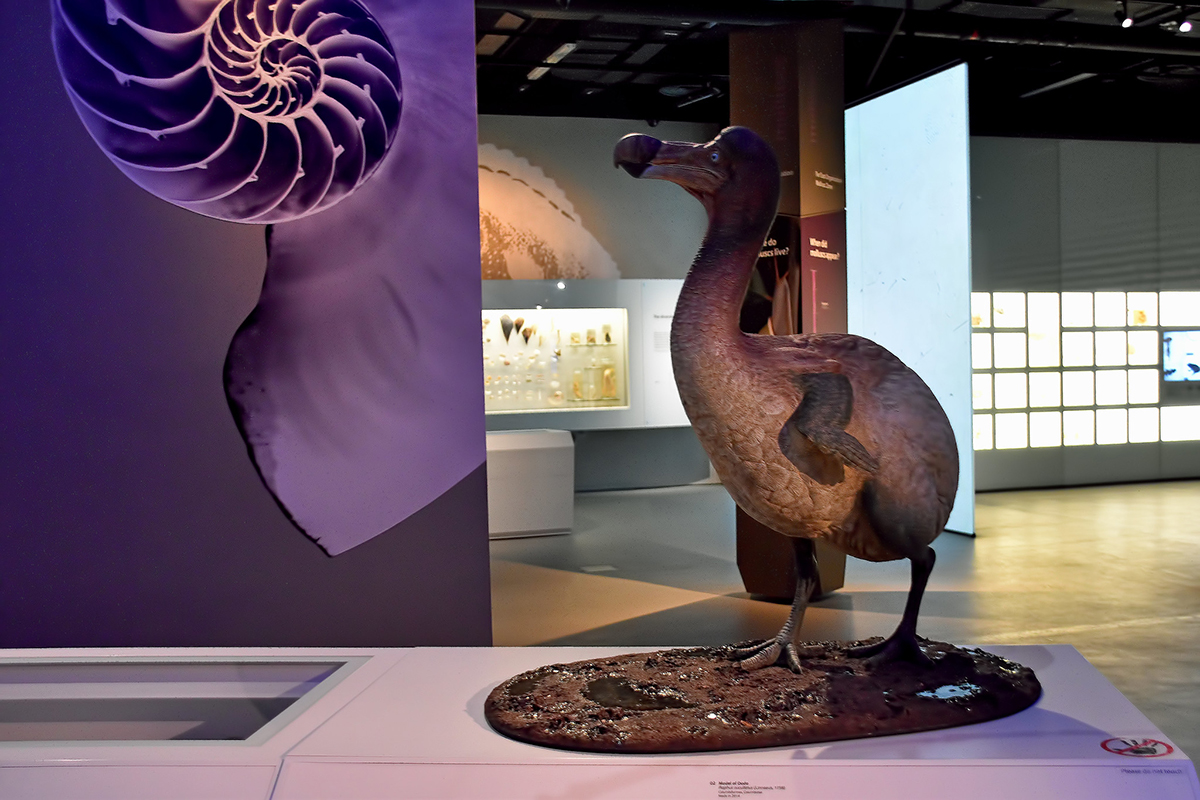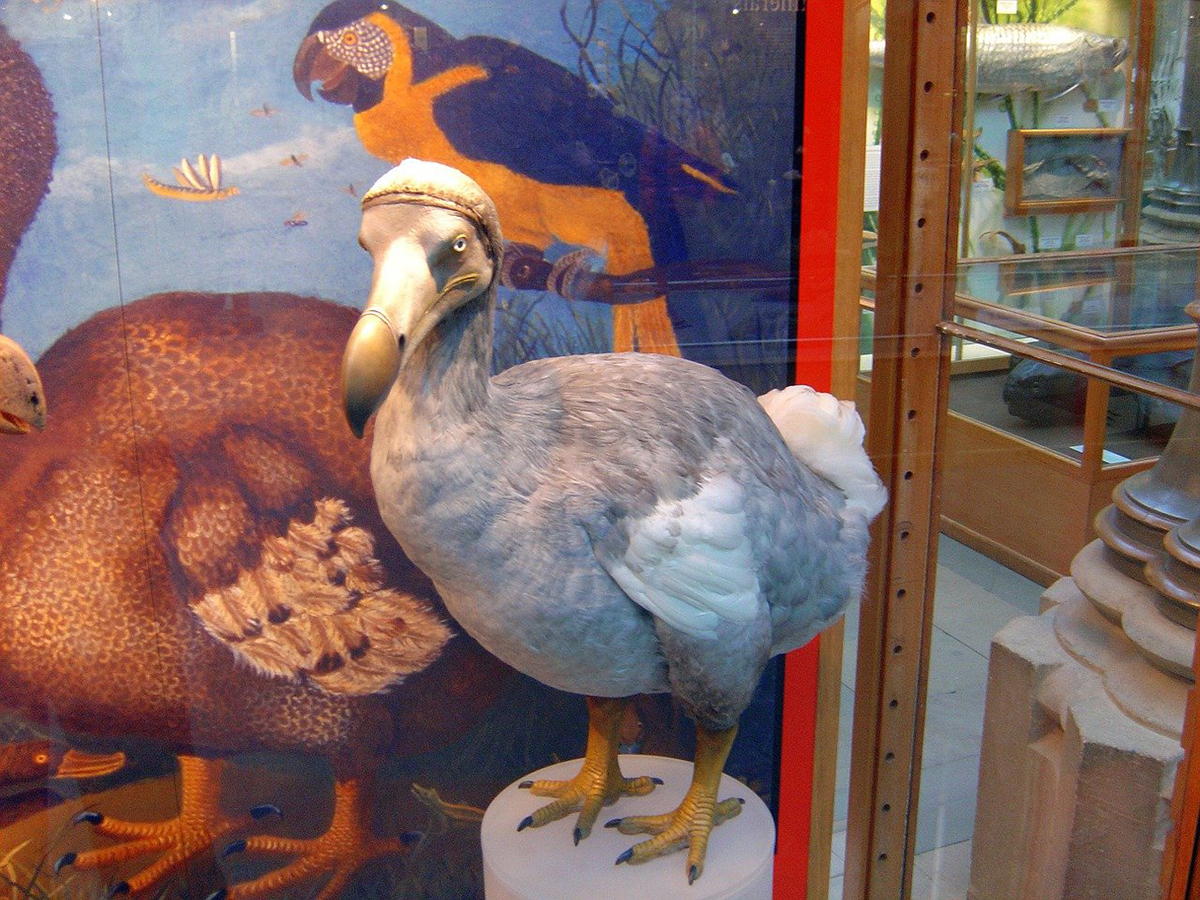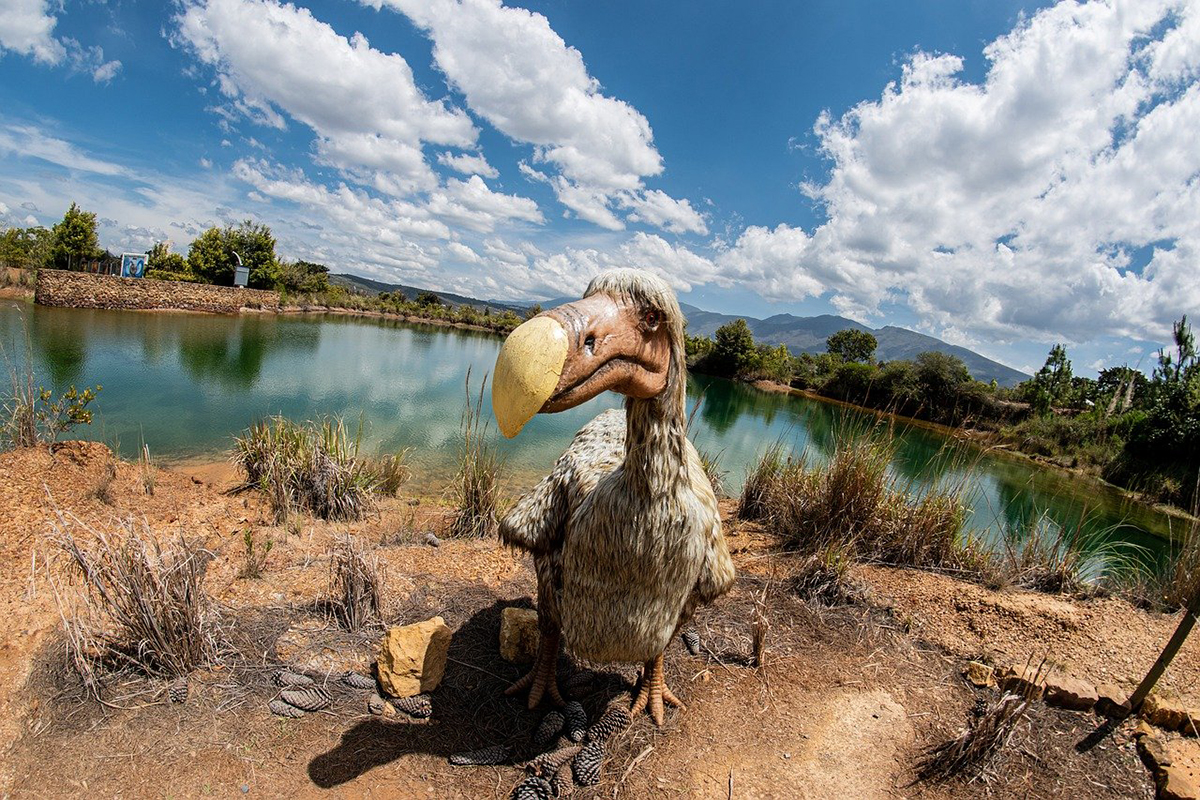
The Raphus cucullatus, commonly known as Dodo or Dronte, is an extinct species belonging to the Raphinae subfamily. It is a flightless columbiform bird that lived on the island of Mauritius in the Indian Ocean. This animal is related to the pigeons that stopped being able to fly due to their adaptation to a terrestrial life. The extinction of the dodo took place at the end of the XNUMXth century and was caused by humans.
The closest genetic relative of Raphus cucullatus is the Rodrigues solitaire, which inhabited Rodrigues Island. It is another species of extinct flightless bird belonging to the Raphinae subfamily. Today, the closest living relative of the Dodo is the Nicobar pigeon, an endemic bird that lives on some islands in the Indian Ocean.
Description of the Dodo

Because the Dodo became extinct fairly early, there is no precise description of this animal. There are speculations about its appearance that are based on old drawings and descriptions and on the remains and skeletons found. In order to adapt to terrestrial life on the island, the Dodos lost the ability to fly. As a result, the musculature and ligaments of the sternum underwent a strong regression. In addition, the plumage became filamentous and the tail became very short with a few weak, arching feathers.
raphus cucullatus was one meter tall approximately and a weight that oscillated between 9,5 and 17,5 kilos. Her plumage was greyish and her wings small. The Dodo's beak was about 23 centimeters long and its point was similar to a hook, probably to be able to break the hard shells of coconuts. Regarding its legs, they were robust and yellow and had curly feathers on the back.
[related url=»https://infoanimales.net/dinosaurs/smilodon/»]
Initially this bird had been called Didus ineptus, since the traditional image that corresponds to it is that of a clumsy and fat bird. However, experts have recently questioned this theory. They currently consider that the old drawings found of the Dodo correspond to individuals in captivity that had been overfed.
Discovery of the Dodo

In the 1574th century, humans arrived in the Dodo's habitat. In the year 1581 the first news related to this bird in Europe was disclosed and in the year XNUMX a specimen of this species was brought to the European continent by a Spanish conquistador. Because of the Dronte's clumsiness and ease of capture, the Portuguese discoverers colloquially called it a "stupid" Dodo. It must be taken into account that this animal had never been in contact with humans, so it could be hunted without difficulty.
Extinction
With the arrival of humans on Mauritius, new species also spread in that habitat. These animals included pigs, cats, dogs, crab-eating macaques, and rats. This led to the appearance of new diseases. In addition, human-caused destruction of forests played a major role in the disappearance of Raphus cucullatus. The last time a specimen of this species was seen was in the year 1662. However, a wild slave claims to have seen a Dodo in the year 1674. For this reason, it is speculated that it did not completely become extinct until the year 1690.
Experts calculate that the hunting of this animal was less devastating than the looting of its nests carried out by other animals introduced by man. Pigs, for example, killed off Dodo eggs as they raided nests to eat them. raphus cucullatus became completely extinct just a century after humans arrived to their habitat.
Dodo Feeding

Researcher Stanley Temple hypothesized that the tambalacoque, also known as the "dodo tree", was part of the diet of Raphus cucullatus. According to him, the seeds of this plant could only germinate after passing through the Dronte's digestive tract. Due to the extinction of this animal, the dodo tree was also close to extinction.
Stanley Temple wanted to prove his thesis. For this he fed wild turkeys with a total of 17 tambalacoque fruits. Only three of them germinated. However, his theory continued to have several points that had not been clarified. For example, the germination of other fruits after being ingested by turkeys was not verified. Furthermore, Temple disregarded the reports by AW Hill and HC King dealing with the germination of seeds, including those of the dodo tree. Both discovered that the seeds did not need prior corrosion to germinate, although these cases occurred rarely.
Popular culture
Due to the history of the Dodo, its curious appearance and the general idea that it was a clumsy and silly bird, it has become a cultural reference which is mentioned in various fields. The Mauritius shield, for example, has a Dronte on the left. In addition, the Jersey Zoo in England has used this animal as a symbol, since it is specialized in reintroducing endangered species through conservation and reproduction.
[related url=»https://infoanimales.net/dinosaurs/titanoboa/»]
In the year 1938, the Looney Tunes created a cartoon of a Dronte called Yoyo Dodo. It's about a crazy bird who starred in "Porky in Wackyland." The Raphus cucullatus has also made appearances in comics, TV shows, and movies. An example for this is the famous feature film «Ice Age». In this film, the protagonists have a confrontation with a herd of Dodos over a watermelon.
Literature

To this day there are numerous literary works that mention the Dodo. Probably the best known worldwide is "Alice in Wonderland", written by Lewis Carroll. In the third chapter, a Dronte appears organizing an absurd race in which he finally decides that all the participants are winners, so they should be rewarded. The Dodo is also referenced in the book "Fantastic Beasts and Where to Find Them" by JK Rowling. In this case, the Raphus cucullatus is presented as a mythical being whose name is "diricawl". In this novel, this animal has the ability to disappear and reappear anywhere and because of this ability, humans believe that it is extinct when it really is not. Also, cloned Dodos are common pets in the Thursday Next novels, written by Jasper Fforde.
Not only fantastic novels have given importance to this animal, Philosophers also make references to this animal. Schopenhauer talks about the Dodo in his work "On the will in nature" calling it "Didus ineptus". According to him, the Raphus cucullatus became extinct due to its lack of will or essence to develop any kind of natural protection.